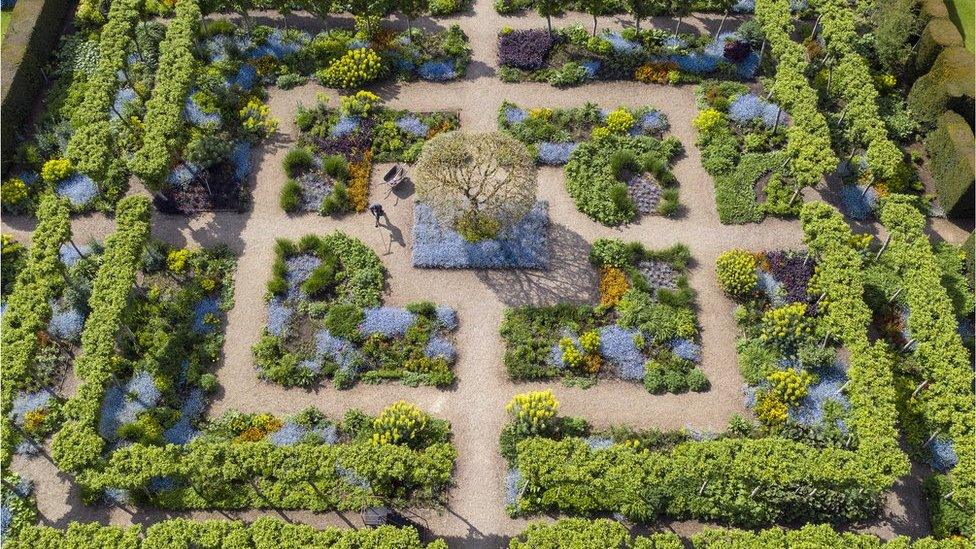Garden photography reveals a world of hedgehogs and foxes
- Published
Ola Maddams has captured striking shots of wildlife at night in her Buckinghamshire garden, using a motion-activated remote camera.

With a full-time job in marketing, Mrs Maddams spends her spare time perfecting the art of night photography.
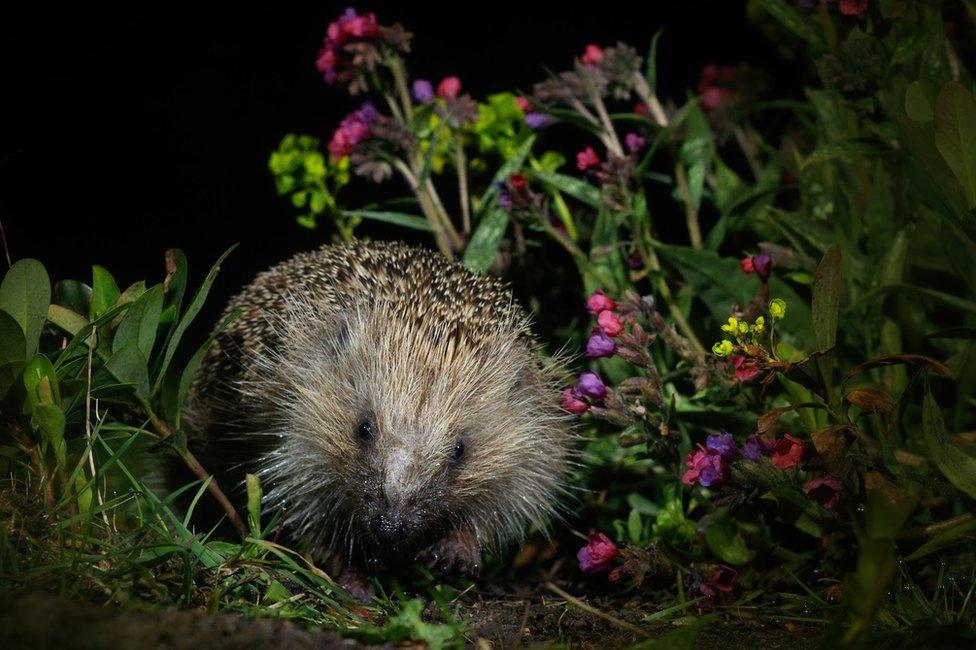
"I've also been fascinated by remote-camera photography - a concept where a camera is left deep in the wilderness for weeks, or months, to capture rare and shy animals," she tells BBC News.
"Photos captured this way show animals at their most natural and relaxed."
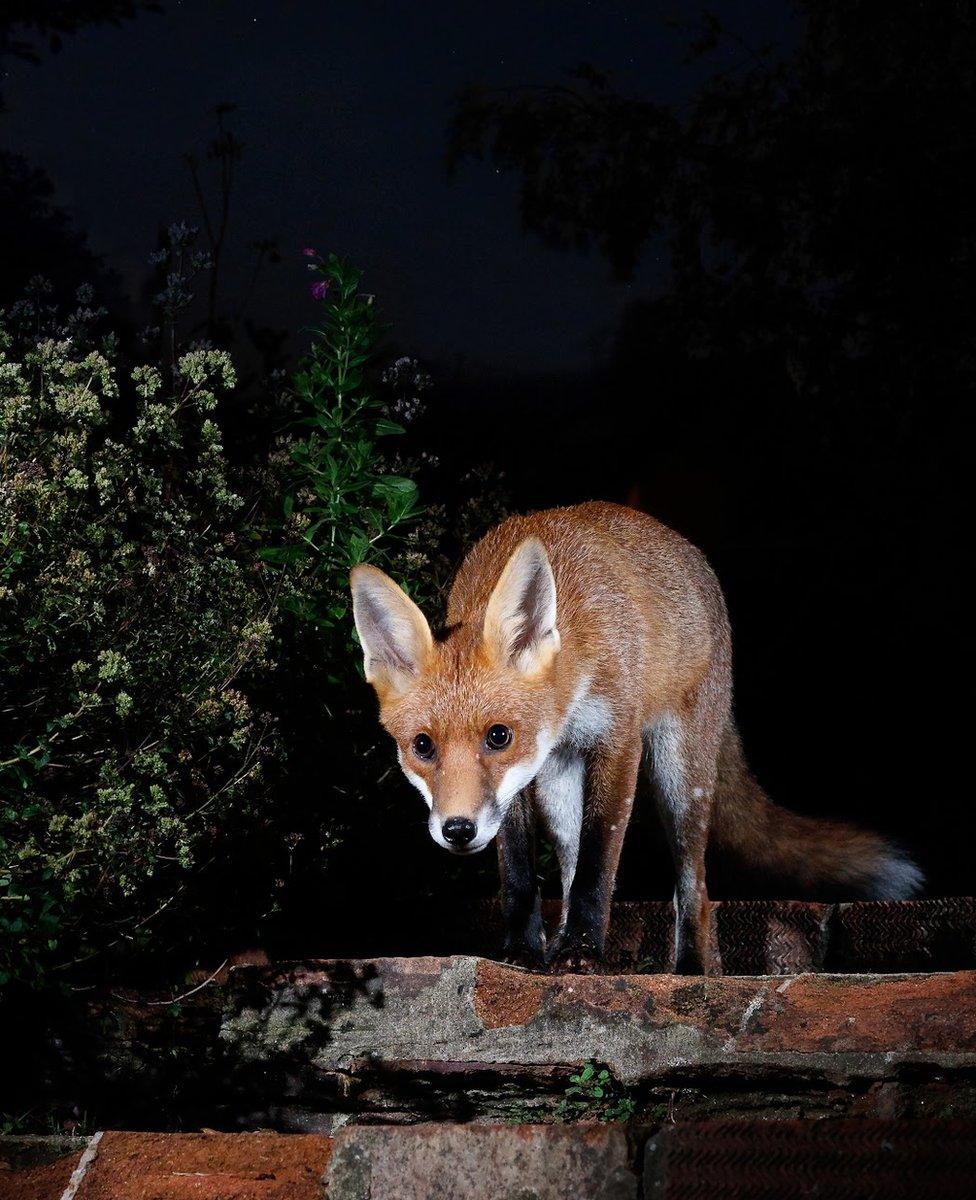
Mrs Maddams has taken photographs of wild animals overseas, including lions, leopards and elephants in Kenya's Masai Mara National Reserve.
But during coronavirus-lockdown restrictions in 2020, she decided to focus her photographic ambitions on her garden in Amersham, using a passive infrared (PIR) sensor and two flashes.
"The sensor reacts to heat, so it triggers the camera when an animal walks past it," she says.
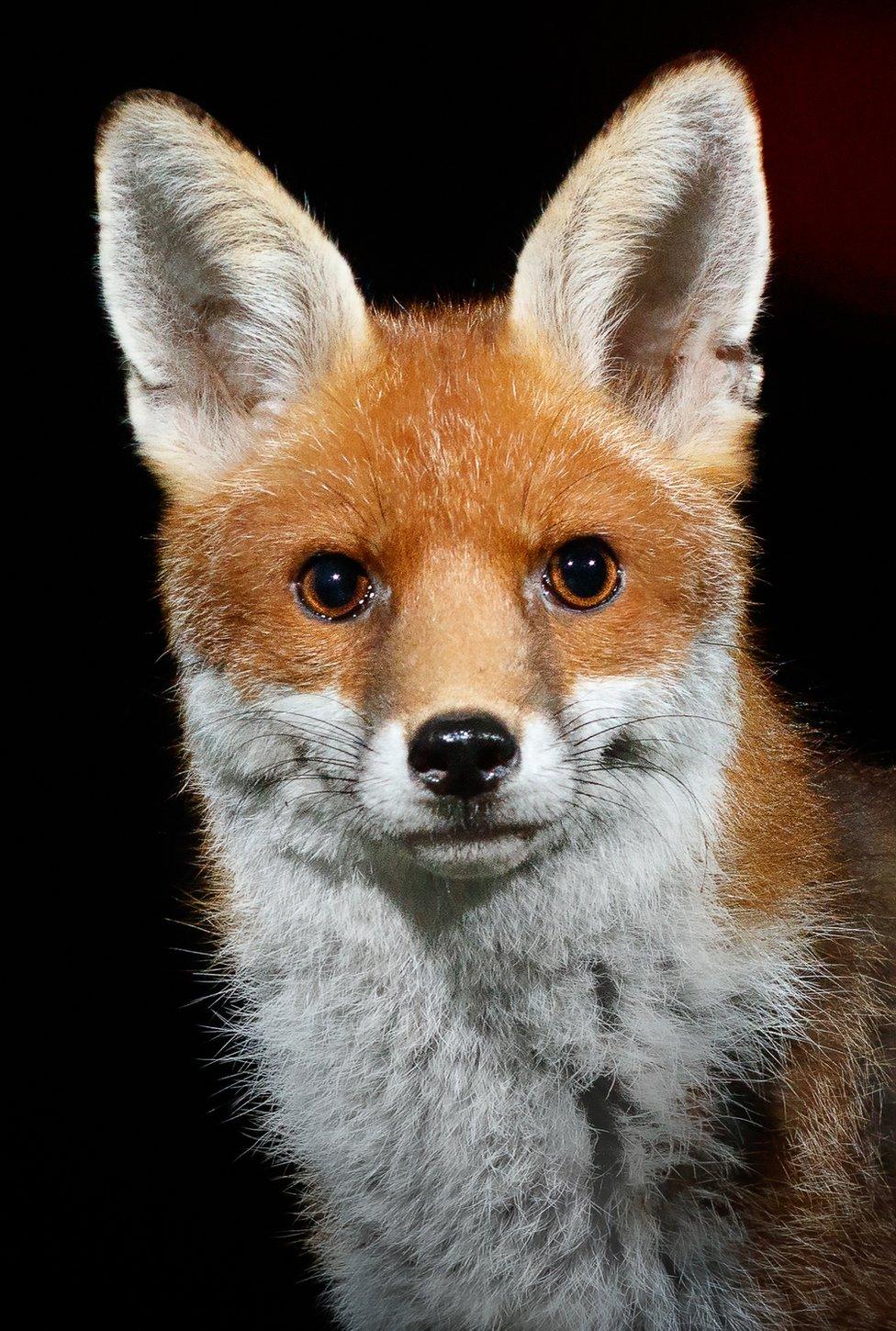
"What has always been most important to me is the welfare of my wildlife models - the quest to get the 'perfect' shot should never come at a cost to wildlife.
"To make sure the animals are not spooked by the clicking sound of the camera, I place it in a case lined with sound-absorbing foam.
"The two flashes are set to the minimal power level and are placed well above the eye level so as not to cause them any distress."
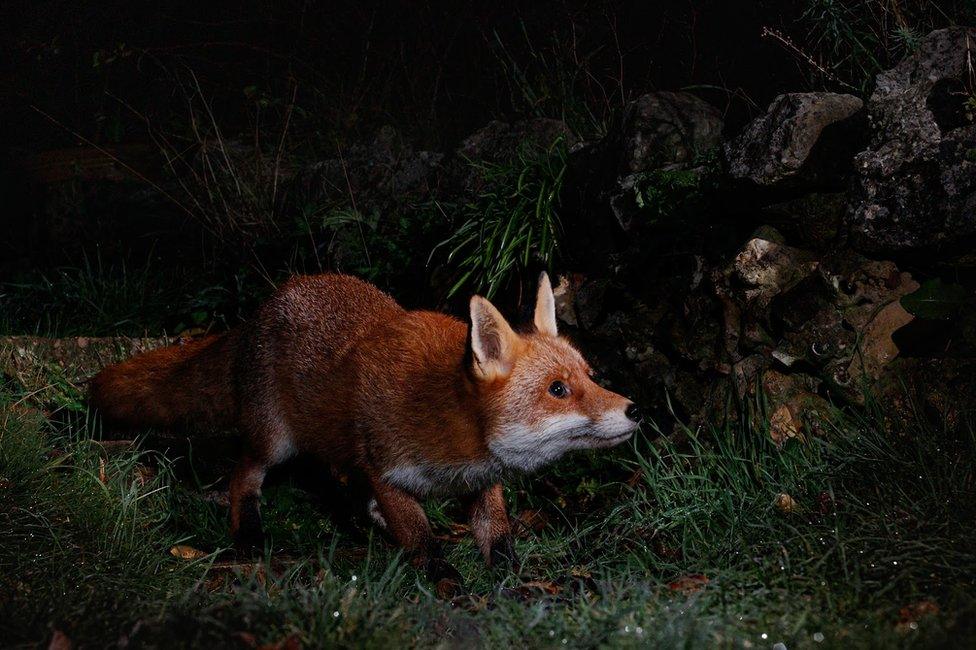
Mrs Maddams's interest in garden wildlife began two years ago in a chance encounter.
"I was reading a book on the patio and suddenly felt I was being watched," she says.
"I saw a small creature on the steps to the garden and immediately thought it was a rat.
"When I realised it was a hedgehog, I was over the Moon - the last time I had seen one was when I was 10 years old, in Poland."
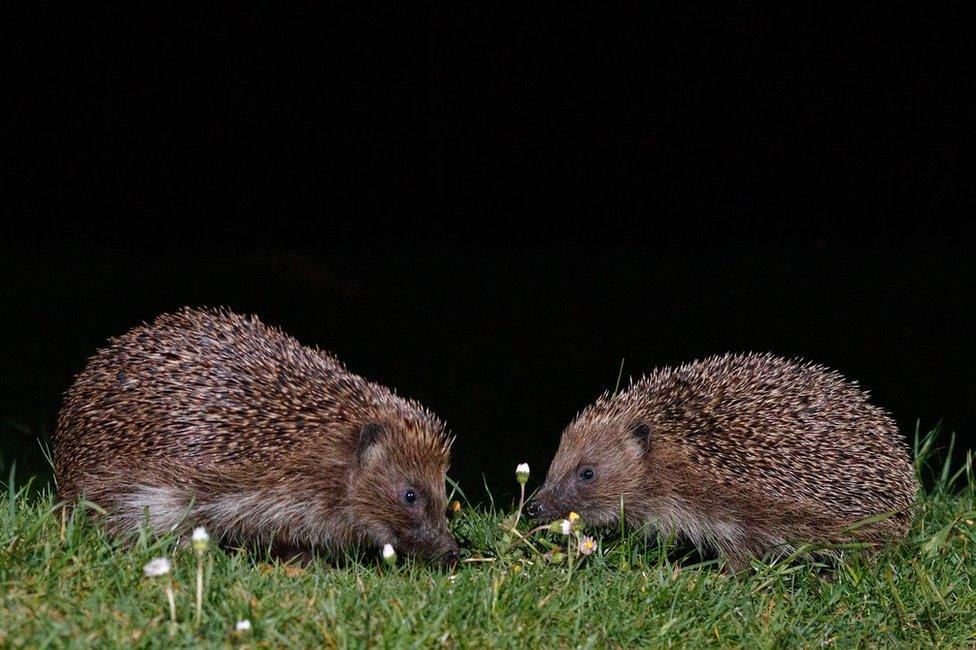
Encouraged by the sighting, Mrs Maddams and her husband researched the animal and started to leave out cat-food and fresh water.
And having bought an infrared trail camera to record video footage, they discovered two hedgehogs, a fox, and a number of local cats, would visit every night.
"We learned that just like humans, hedgehogs and foxes are creatures of habit, showing up in our garden at specific times and following certain routines," she says.
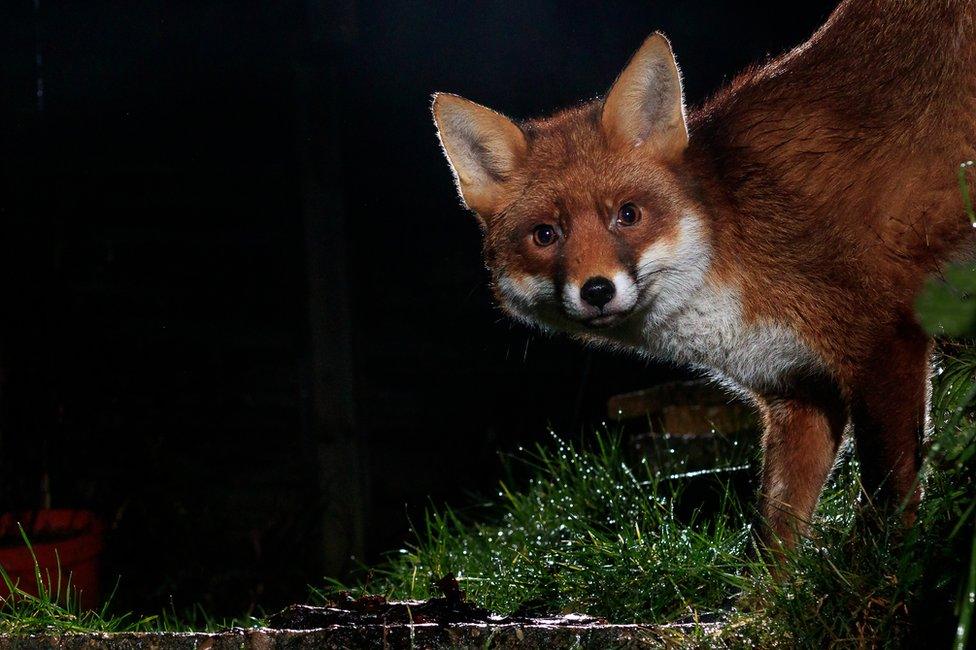
But her initial attempts at remote-camera photography were disappointing.
"Some nights, all that my camera would capture was a tip of a fox's tail or a hedgehog's backside," she says.
"Other nights, they wouldn't trigger the camera at all.
"But I didn't give up - it took a lot of patience and practice to work out the best camera settings, positioning of my flashes and guesswork on where the animals might be.
"It felt like playing a lottery, with huge potential rewards but low odds of winning."
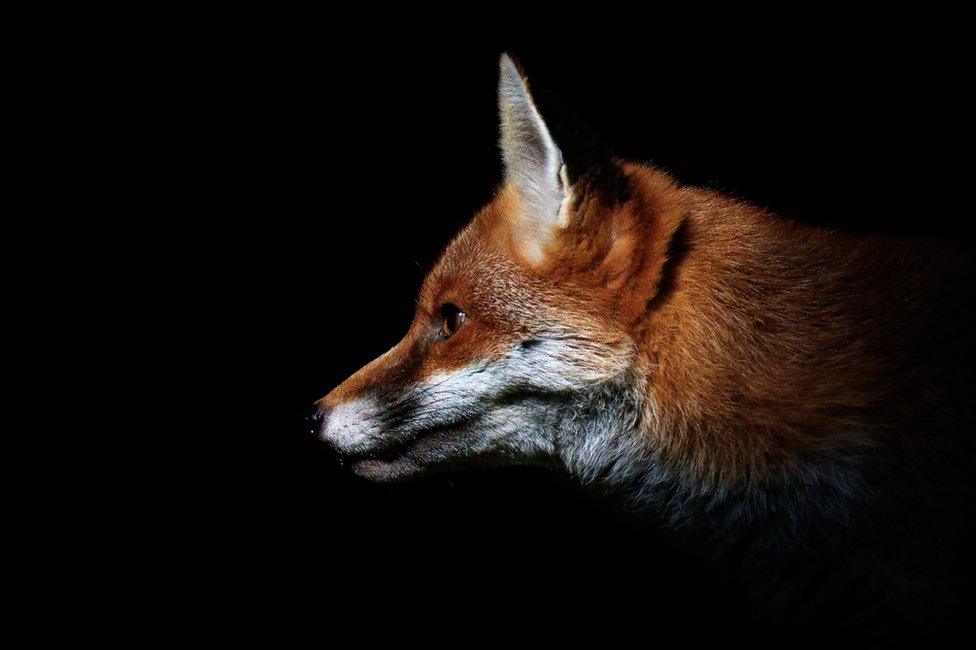
But after setting up the camera every night for a year in her garden, Mrs Maddams's persistence paid off, with a collection of striking photos.
"Each photo needs gentle corrections to adjust the colour balance, open up shadows or sometimes remove an annoying blade of grass that is distracting from the subject of the photo," she says.
"I sometimes use a gentle vignetting effect to focus the eyes on the centre of the image, too.
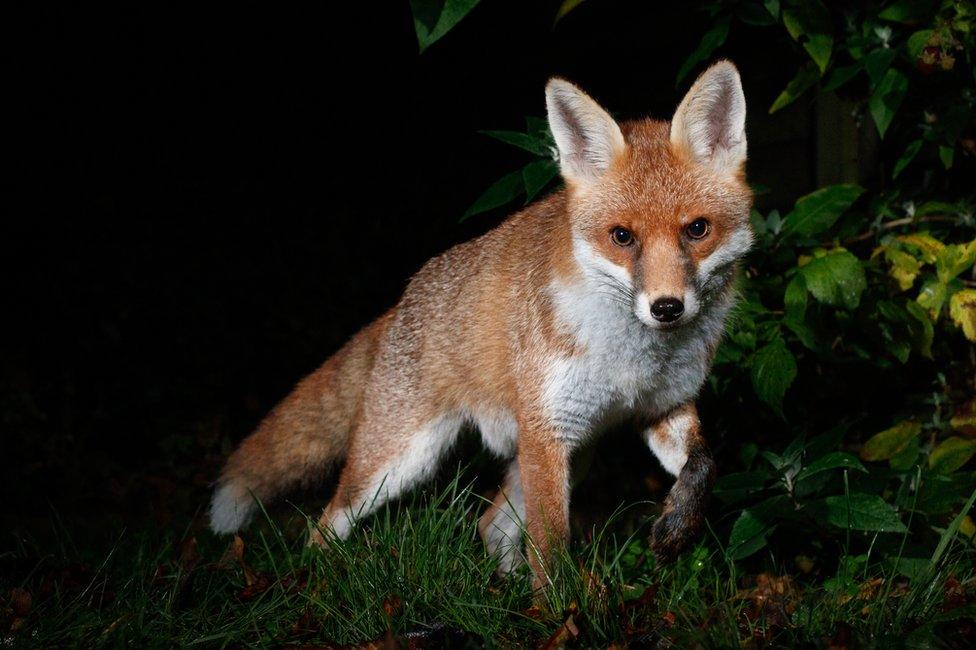
"We've learned a lot about interactions between hedgehogs and foxes - it's important to remember that foxes are opportunistic predators and can attack hedgehogs.
"The hedgehogs tend to curl up as soon as they see a fox.
"Fox cubs seem very inquisitive about them, trying to nip them or push them, but soon learn not to risk a prickly injury.
"Only once did we record an attack - a vixen grabbed a hedgehog by the back leg and flipped it in the air.
"She then left it."
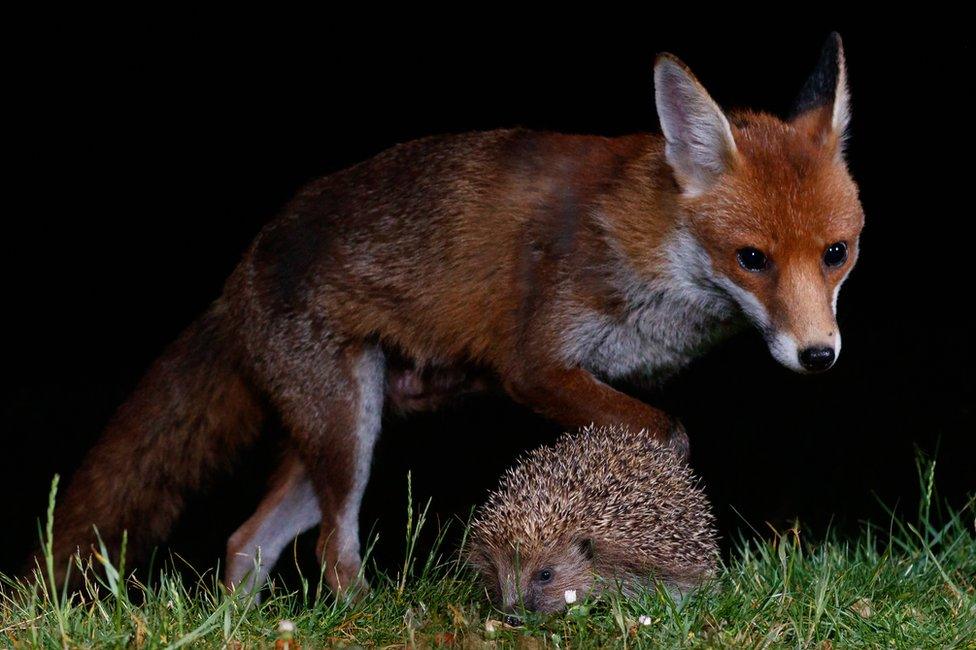
A 2018 report suggested UK hedgehog numbers had halved since 2000, with the animals disappearing more rapidly in the countryside, as hedgerows and field margins are lost to intensive farming.
"Putting holes in fences and creating the so-called hedgehog highways allows them to forage for food over wide areas," Mrs Maddams says.
"Keeping parts of gardens wild - which helps bugs thrive - allows more natural foraging for hedgehogs and a place for them to hide, nest or hibernate.
"For advice on protecting hedgehogs, it's best to stick to sources like the RSPB [Royal Society for the Protection of Birds] for info on how to make your garden hedgehog friendly, external.

"I don't believe in feeding foxes in the garden, as it can lead to dependency on one food source or can make them the target of pest controllers if they spend a lot of time in one area."
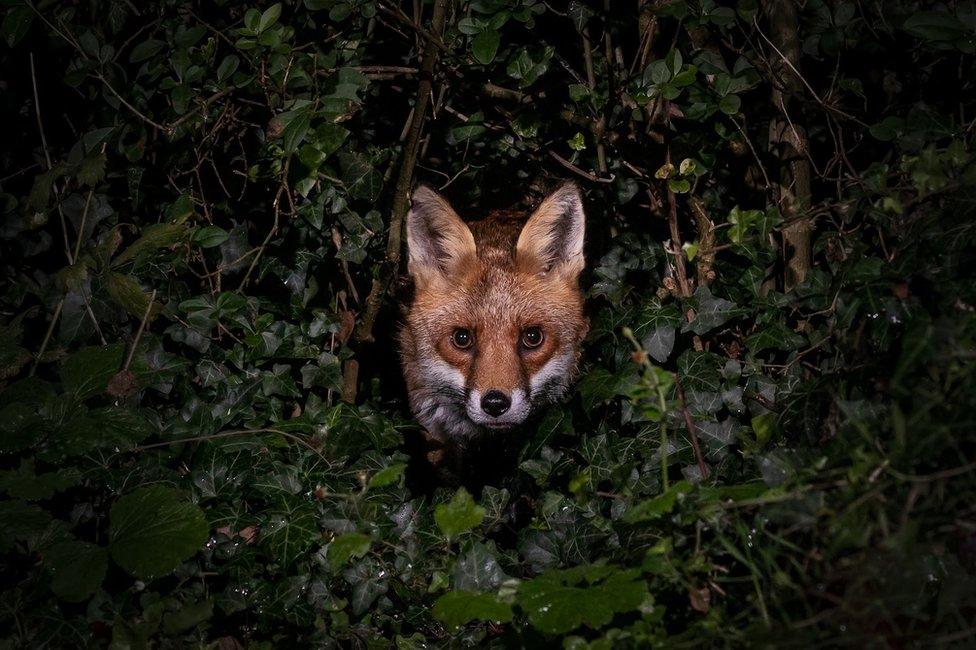
More recently, Mrs Maddams tried her luck with her remote camera in her local woods and was rewarded with a badger and a roe deer.
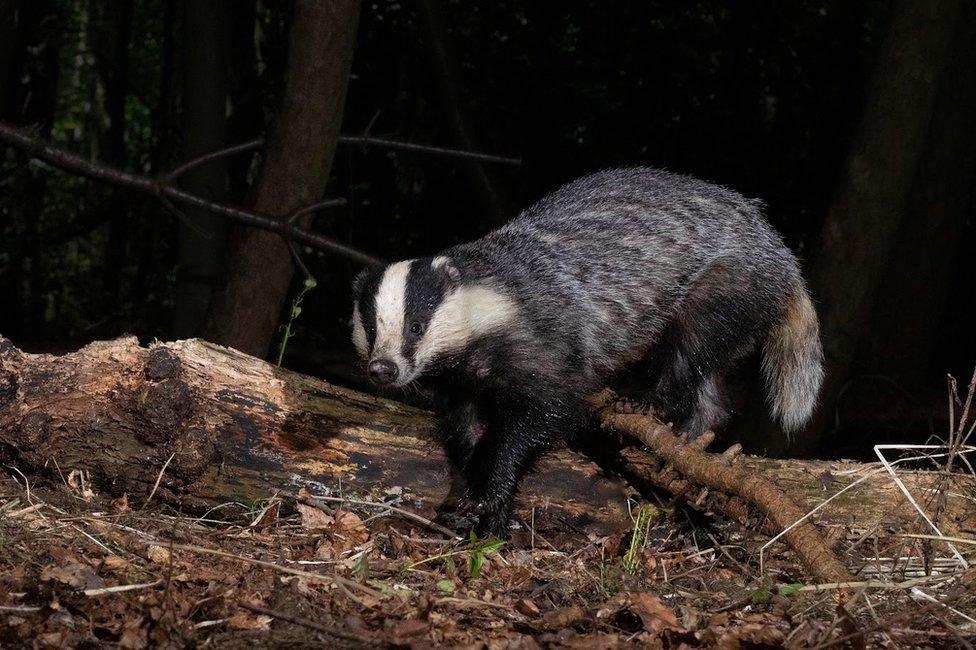

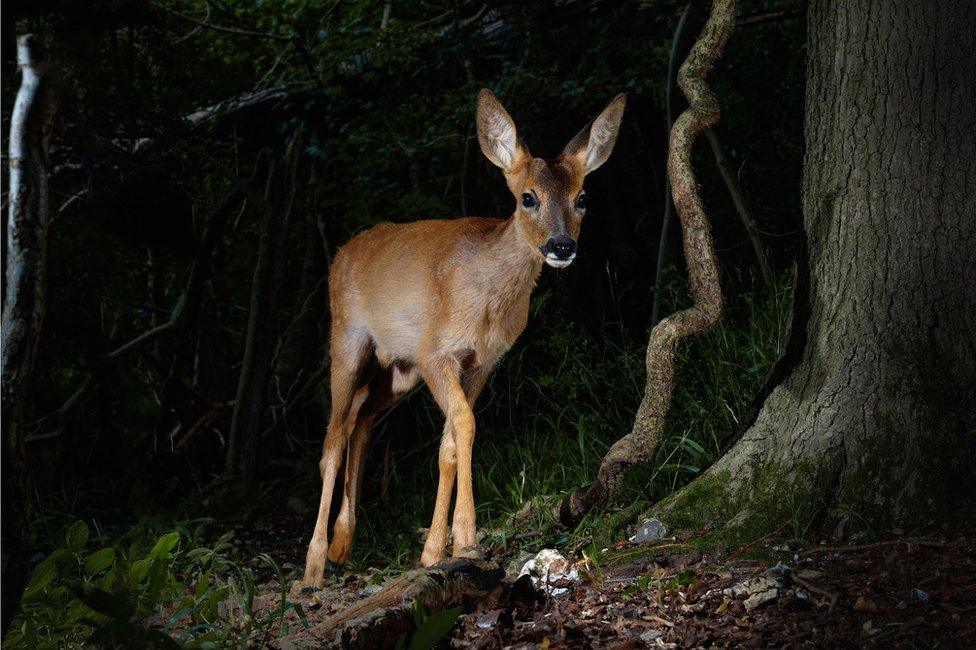
"The night photography gave me something to look forward to every morning when checking photos on my camera, in a year when every day felt the same," she says.
"I have proven to myself that you don't have to go far to take fantastic wildlife shots - in fact you don't have to go further than your garden."
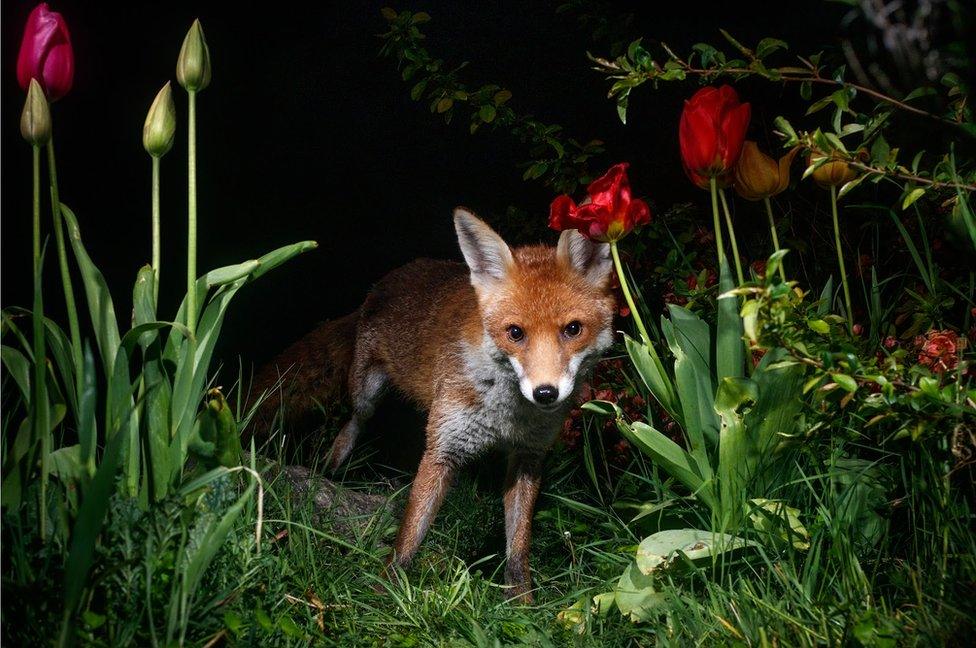
Photos courtesy of Ola Maddams, external.
Related topics
- Published2 September 2021

- Published5 August 2021
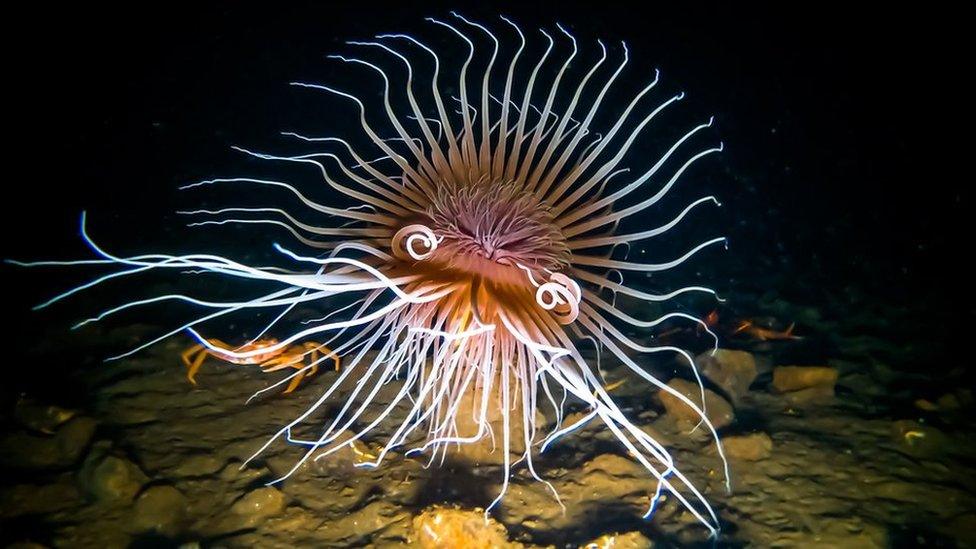
- Published20 April 2021
